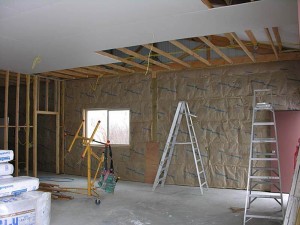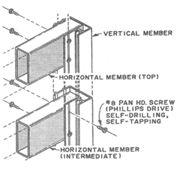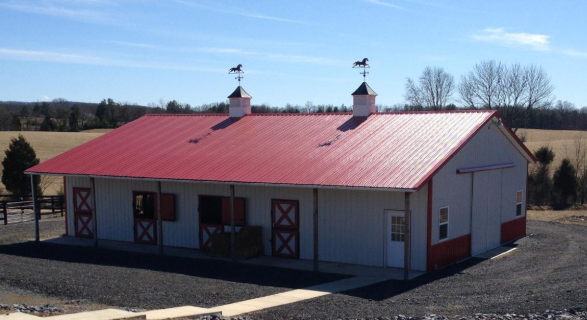Solving Steel Roofing Leaks
Nothing much more frustrating than finding your post frame building’s new steel roofing has a leak (or two) – however they can be solved!
Reader (and client) BRYAN from MECHANICSVILLE writes:
“I’m really loving my pole barn.
With all of the rain we’ve had, I’ve noticed two leaks, I believe they are coming through roof screw holes, what is your recommended way of correcting the problem? Should I put a sealer around the screws, replace the screws or something else?
Thank you for your time and help!”
Quite pleased you are loving your new pole barn! In case anyone has wondered why we do what we do, this would be why – there are such great rewards in being able to aid clients in their new building journeys!
If you have been able to narrow a water issue down to these two locations, you have solved a most challenging puzzle piece. Often, with use of a Radiant Reflective Barrier under the roof steel, water will enter in one place and leak out in a different location. This can cause leak searching to be a true chore.
Under no circumstance should a sealant be used around or over top of screws. Eventually this sealant works away from the screw and the leak is back! Now it becomes diagnosing why there a leak exists and how to best fix it.
Most often leaks are caused by a predrilled screw hole not having a screw in it. Although this sounds obvious – it does occur. Easiest fix, put a screw in hole. Next up would be a screw has missed a purlin. If this happens to be your case, chances are you can see a “shiner” (galvanized screw shank) alongside, or poking out a side of, a purlin. Provided screw holes were pre-drilled, this can be resolved by removing offending screw, as well as its adjacent neighbors for several feet in each direction along the purlin. Have someone push that purlin uphill or pull it downhill until a screw can be replaced into solid wood.
In event of a random miss, for whatever reason, have someone hold a block of 2×4 under the screw hole and drive a screw through roofing and into the block.
 Next possible culprit would be a screw not properly seated. If under driven, (EPDM gasket not compressed) screw can normally be driven in further. If over driven (gasket smashed) screw should be replaced with either a larger diameter and longer length screw (say #14 x 2″) or by driving a wooden match stick or other slender piece of solid wood into screw hole, then use an originally sized screw back in original hole. If a screw was driven in other than perpendicular to roofing, it may be possible to remove the screw and drive it straight in.
Next possible culprit would be a screw not properly seated. If under driven, (EPDM gasket not compressed) screw can normally be driven in further. If over driven (gasket smashed) screw should be replaced with either a larger diameter and longer length screw (say #14 x 2″) or by driving a wooden match stick or other slender piece of solid wood into screw hole, then use an originally sized screw back in original hole. If a screw was driven in other than perpendicular to roofing, it may be possible to remove the screw and drive it straight in.










Years ago, we used ardrox nails with lead washers. They seemed to hold tighter and leak less than the screws with neoprene washers we see now. Ardrox nails, with their slow twist, resist backing out; and lead washers do not get ruined by the sun. Recently, out of frustration with leaks at screws, I tried to buy some lead washers, but could not find any for sale; so I will buy lead sheet and make my own. Screws loosen readily by the action of the metal expanding and shrinking as it heats and cools, but they do not tighten. I have tightened many a screw; it is a yearly duty. I am on the third size up now and so may have to remove all the screws and slide the metal over to get into ‘new’ wood.
I haven’t had your experience with screws “working loose” and certainly not readily. If you look around the screw shank as it goes into wood, you can see how the wood fibers are pulled up. As wood has a memory, when the wood tries to return to flat, it will indeed pull the screw in tighter. If nails were indeed the superior fastener for steel siding to wood, everyone would be using them, as they are so much less expensive than screws. My own post frame home is now over 15 years old and has thousands and thousands of roof screws and not a one of them is loose.